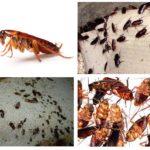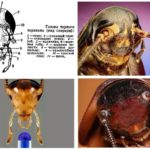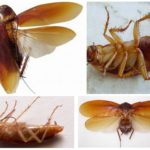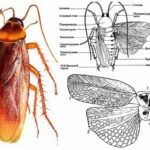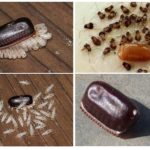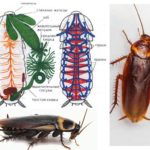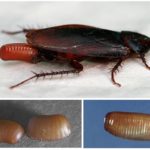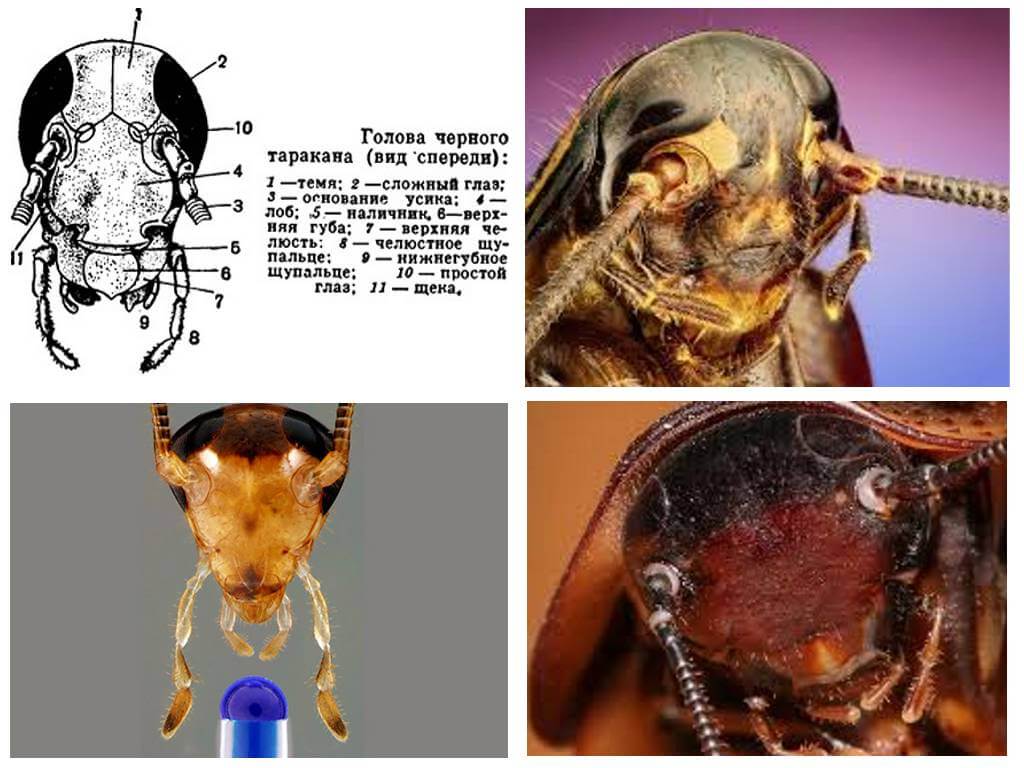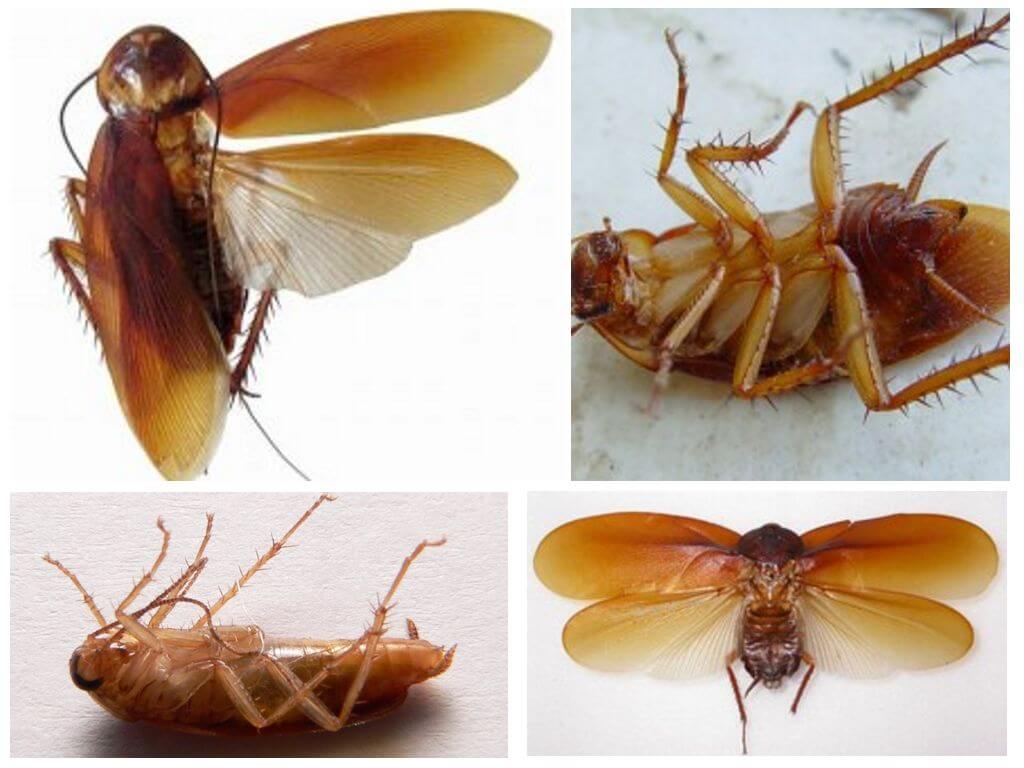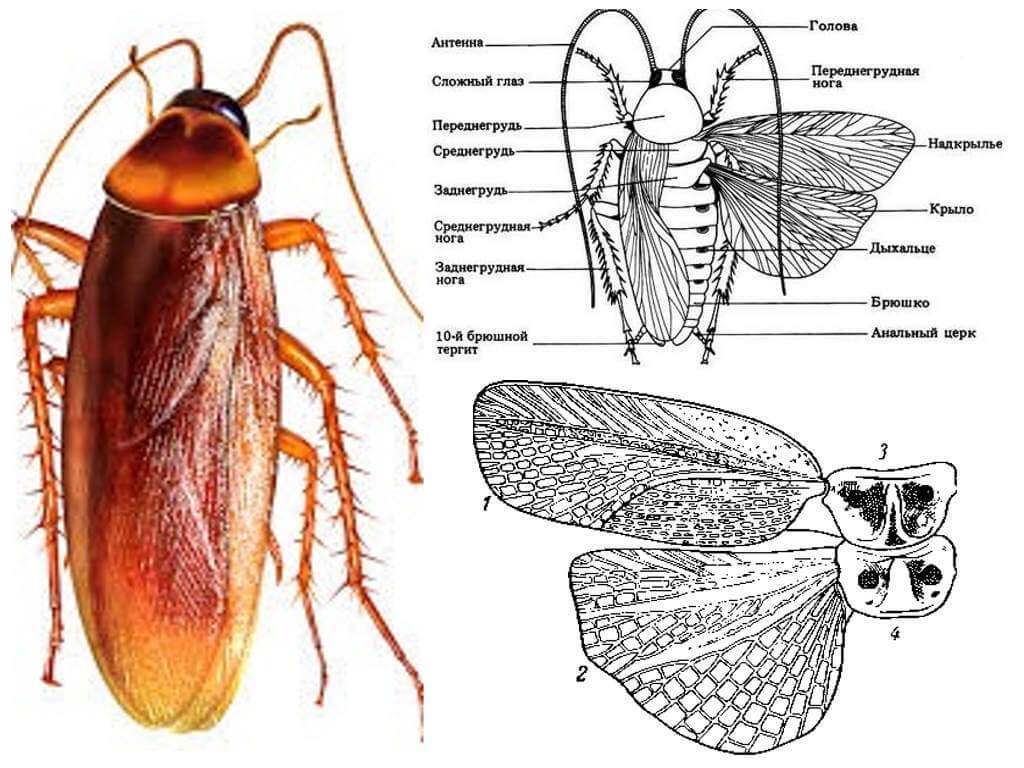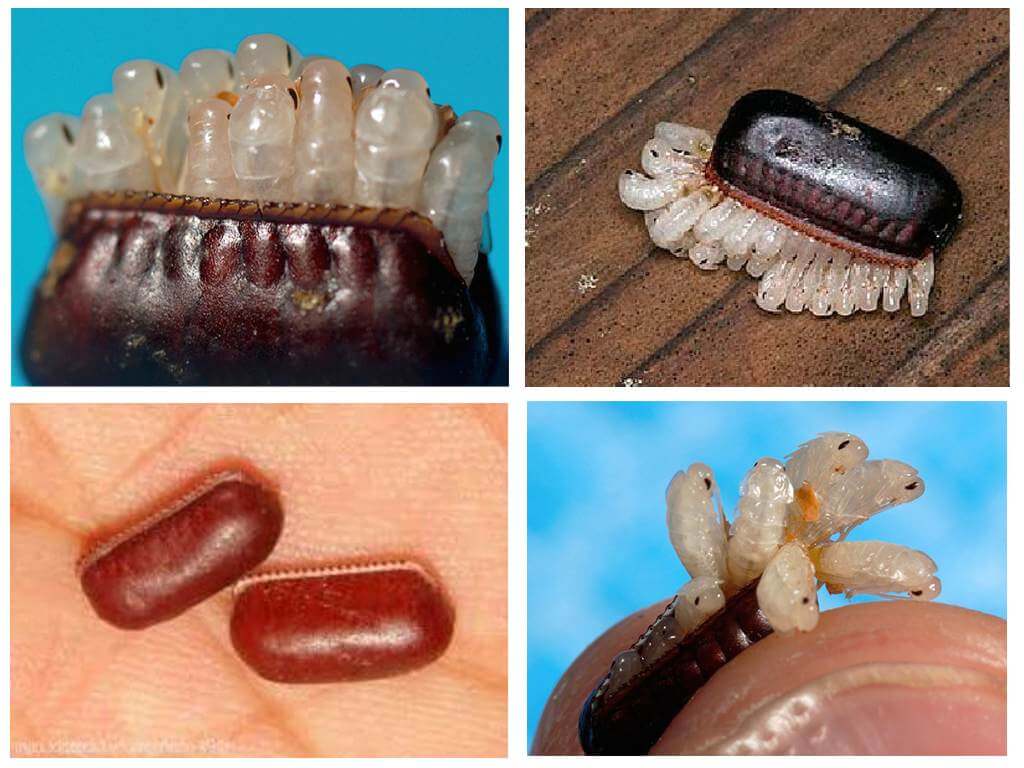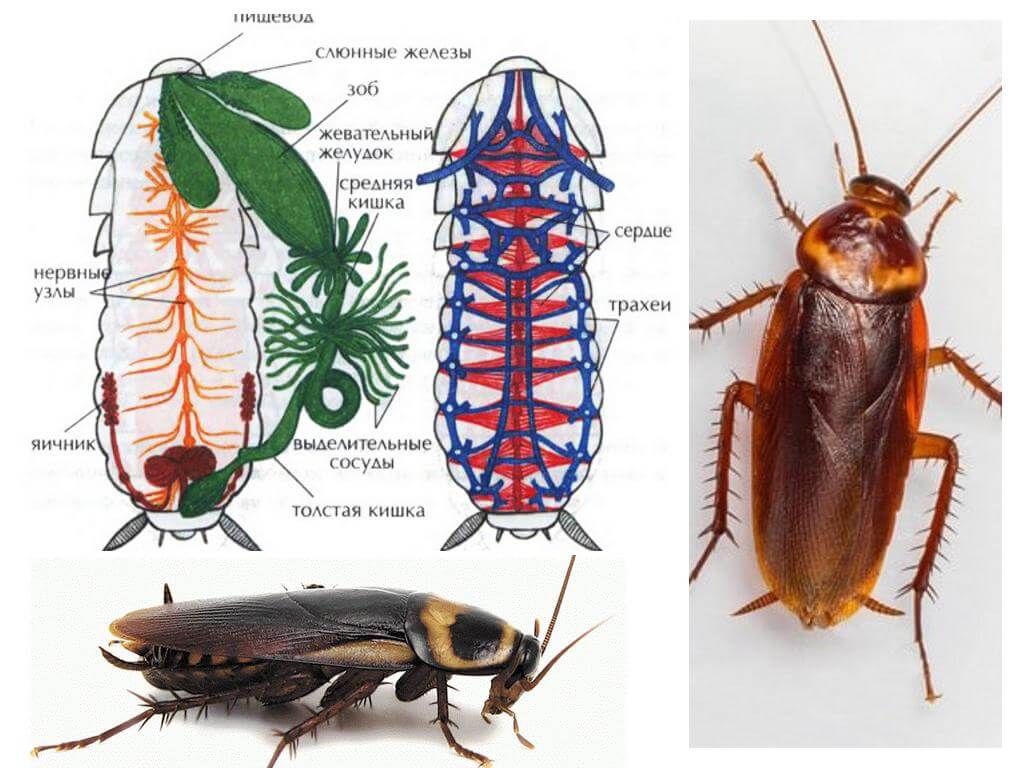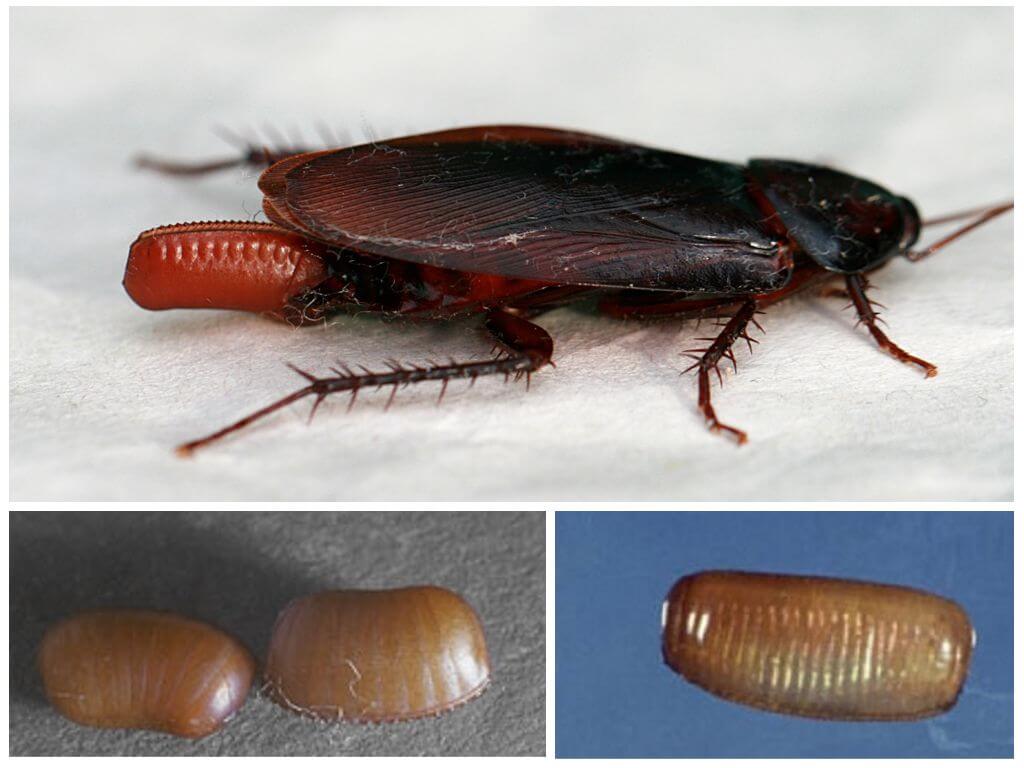The structure of the cockroach - external and internal
Content
- Cockroaches
- Cockroach head
- Cockroach body structure
- Cockroach wings
- Ooteka and nymphs
- Cockroach structure
- Ooteka cockroaches
The structure of the cockroach is amazing. Despite the fact that this insect has become familiar in urban apartments and rural homes, people do not know much about one of the oldest arthropod species. Remains cockroaches are found in Paleozoic sediments. Finds more than 280-300 million years.
External structure of a cockroach
The squad of cockroaches has more than 7,500 species of insects. In our country, the most common type of synanthropic cockroaches is redhead (Blatellagermanica L) or Prusac. A slightly smaller number of representatives black cockroaches (Blattaorientalis L.) and a relatively rare species in our latitudes is American (Periplanetaamericana L.). The external structure of the cockroach is not very different from the species. The size and color of insects vary somewhat.
Interesting!
In the structure of modern Prusaks, there is much in common with the ancient representative of the cockroach-like unit, Ignaroblatta. The fossils give a complete picture of the ancient cockroaches - they were four times larger than the Prusak, but smaller than the modern giant cockroaches and made up the majority of insects living in the ancient continent of Gondwana. The “construction” of these insects was so successful that nature has been playing them over and over again for 300 million years without changes.
The body of the cockroach is flat, which allows the insect to crawl into the cracks, divided into three parts - the head, the chest (front, middle, back chest) and the abdomen.
Head structure
The head is triangular, covered from above with a flap-like anterior segment of the breast. Only the back of the head peeks out from under the shield, the rest of the head of the insect is pointing down. On the sides of the head there are two faceted eyes, which consist of 1,800 ommatidia, thanks to which the cockroach sees the object as a mosaic made up of tiny colored pieces. In a cockroach, the eyes do not clearly distinguish the details of the object, but the perception of light flashes in an insect is 5 times higher than in humans.
Interesting!
What allows the cockroach to dodge flying sneaker? This is facilitated by the insect's faceted eyes. Due to the fact that the cockroach perceives the frequency of light flashes in the range of 250-300 Hz, he sees the movement of the object 400% slower than its comfort zone. For an insect, people and objects move like a thick syrup and have enough time to escape.
On the front of the head there are two simple ocelli which complement the paired faceted ones. Their role is not fully understood, but it is likely that they help the insect to orient themselves in the dark.
Long antennae are organs of touch, smell, and thermal sensitivity.The antennae are very mobile and have their own nerve processes that send signals to the middle part of the brain of arthropods. Antennae are also a means of communication, touching them to the antennae of another individual, the insect transmits and perceives information. With each molt, the number of segments on the antennae of the insect increases, and in the mature specimen it reaches about 80 pieces.
Particular attention should be paid to the structure of the oral apparatus. In a cockroach, each of its parts is specialized:
- the upper lip (labrum) - is movably articulated with the head and on the inner surface has receptors that analyze the composition of food;
- the mandibles (mandibles) are represented by massive, curved plates with sharp teeth; Their purpose is to firmly hold a piece of food;
- the upper jaws (maxillae) are located above the lower ones, and are used for chewing, grinding, grinding food and are equipped with chemoreceptors;
- the lower lip (labium) consists of several parts and surrounds the mouth opening below. Its function is to prevent food particles from falling. Tactile and taste buds located outside allow you to analyze and detect food;
- in the cavity of the rotanopharynx is the salivary gland and the formation is similar to the tongue, through which the insect absorbs fluids.
The gnawing mouth apparatus has not changed since the time of the relict cockroaches.
Thoracic structure and purpose of the legs
Elytra and wings, as well as insect legs, are located on the chest. Like any representative of the class of insects, the paws of a cockroach are six. They are located on different segments of the breast and are presented:
- prothoracic paws, which are shorter than the others and are “brakes” during the rapid movement of an insect;
- mid sternal pair of legs that can move in different directions, providing high maneuverability;
- hind paws - main walking limbs. They are longer than the other paws and move the body of the insect forward.
The leg of the cockroach representative is a complex organ consisting of five segments. Powerful flattened hips armed with spikes from the bottom. On the first 4 segments are the pads, and the fifth is equipped with claws, between which is located the sucker. The structure of the legs of a cockroach allows them to move on a vertical and horizontal surface.
Interesting!
With the help of the legs, the cockroach not only runs, pushing with its long hind legs, it can jump far and high. The insect is thoroughly “washed” using all six limbs - the abdomen and back are scraped with spiked surfaces. He pushes the front pair of legs into his mouth and cleans the antennae, “polishes” the head with them. The hind legs cleanse the belly of the insect.
How many legs a cockroach would not have, he uses them all for different purposes. The speed that a running cockroach develops is 3-4 km / h. And if the insect was the size of a leader on the run - a cheetah, it would catch up with him. Sensitive hairs on the legs allow sensitively catch the movement of air, which provides a quick response to a moving object. In a minute the cockroach changes a movement trajectory more than 27 times.
On the chest of the insect are attached two pairs of wings. More rigid elytra cover thin wings and abdomen. In cockroaches, sexual demorphism is traced in the length of the wings - they are longer in the male, and much shorter in the female. Prusaks use wings to accelerate the run, slow the fall and mating games. The female climbs on the back of the male during mating and its spread elytra form a convenient platform for a more massive female and demonstrate readiness for mating. Only kind of cockroach that can fly - This is Megaloblattalongipennis, he lives in South and Central America.
Abdomen structure
The belly of the insect has 11 segments, but only 7-9 can be distinguished. The tenth tergite forms the anal plate. From the sides of the anus, articular cerci are located - paired outgrowths of the last abdominal segment, which have no functional significance, but are the hallmark of the red goose and the memory of relict progenitors.
In the female, a continuation of the abdomen is an ooteca, in which from 12-16 eggs larvae develop. With enough food and water, the female can produce a swelling every 2-3 days.
Interesting!
When growing up the weight of the cockroach changes. During the period of molting and growth of the larva, it increases from 2 to 8 mg, and when transforming from a larva to a nymph and an imago, it decreases. Larvae differ from imago in that they do not have wings, cerok and spines on their legs and are equipped with short antennae. Only after the fifth molt, young insects acquire sexual differences and the appearance characteristic of an adult individual.
Professor at the University of Massachusetts J.Kankel argues that hunger, thirst, safety and sex are the main driving instincts driving a cockroach. His students often ask the question: “Does the cockroach have a brain?” To find out the answer to it, consider the internal structure of an ordinary red prusak.
Internal structure of a cockroach
You can often hear that a cockroach is able to live without a head for 2-7 days, and according to some data, a whole month. What features of the nervous system and the structure of the body of this representative cockroach allow tolerably decapitated individuals?
Nervous system
The central nervous system of the cockroach consists of 11 nerve ganglia (nodes). "Brain" form two large nodes located in the head of an insect. According to the place of localization, they are called nasopharyngeal and subpharyal. The brain is responsible for the function of the eyes, antennae and palpi located on the lips of the insect.
Together with the pharyngeal 3 thoracic ganglia innervate the oral apparatus, wings, paws and muscles of the head and thoracic.
Six small abdominal nodes are completed with a large end, which ensures the activity of the genitals and the sensitivity of the cervix.
Interesting!
Due to the peculiarities of the internal structure, a cockroach can survive for some time and without a head. The brain node does not control its breathing. There is no pressure in the circulatory system, so it does not bleed. A fixed insect does not waste energy derived from food and goes without food. In a cool sheltered place, a healthy cockroach can live without a head for up to a month.
An extensive network of nerve fibers provides the innervation of all organs, including the senses. In addition to vision, temperature sensitivity, smell, Prusac has a well-developed ear. His auditory receptors are located near the cerok, at the anal end of the abdomen.
Circulatory system
The circulatory system of an open insect. The blood of a cockroach is white and is called hemolymph, it washes all the internal organs, freely circulating inside. In a cockroach, the heart is represented by a tubular organ, which is located in one of three cavities - the dorsal pericardium. Below, in the middle sinus is the intestine, and the third - the chest sinus contains a nerve cord.
The “blood” movement occurs due to the pulsation of the “heart” and pressure drops in the lacunae, which is created when the motor and respiratory muscles are reduced.Blood moves slowly, so the insect is so sensitive to the surrounding temperature.
Respiratory system
The insect breathes with the help of 10 pairs of tiny holes - spiracles localized on the sides of the abdomen segments. A branched system of tubes, tracheol, which connects into three pairs of large tracheal trunks, departs from the spiracle. The respiratory system supplies oxygen to all the internal organs into which it diffuses.
Interesting!
Cockroaches survived dinosaurs because they can hold their breath for a long time (up to 40 minutes), blocking the spiracles.
This ability is due to the fact that the fixed Prusak does not waste energy, it needs less oxygen for the Krebs cycle. Prusak ¾ life is in a static state - it is the laziest creatures on Earth.
Digestive system
Once in the mouth, the minced food is moistened with saliva and transported from the pharynx through the esophagus to the goiter. From there, gruel enters the muscular stomach. The digestion process begins in the goiter and ends in the stomach. Then the food enters the intestine, divided into anterior and posterior intestine.
Interesting!
The front gut of a cockroach is divided into several parts. The buccal chamber, located behind the mouth opening, has 6 teeth on the inner surface, with which the cockroach chews the food that has entered the mouth.
In the intestine of an insect, bacteria and fungi peacefully dwell, which help the cockroach to digest everything that enters the stomach, even the inedible inorganic.
Feces and urine excreted from one anus. Malpighiev canaliculi are responsible for the synthesis of "urine", which collect dissolved toxins throughout the body and transport them to the outside.
Reproductive system
The male reproductive system consists of:
- located in 4-6 segments of the abdomen of the testes;
- fungal (utricular) gland;
- seed bubbles flowing into it;
- body mating.
Spermatozoa produced by gluing together form a spermatophor surrounded by a three-layer wall. Each of the shells performs its own function of accumulating, storing and discarding semen.
The female reproductive system is represented by:
- ovaries of 8 ovariols each;
- 2 oviducts opening in the vagina;
- the reproductive chamber, in which the eggs accumulate, the collateral glands flow in, the secret of which forms the walls of the stream;
- oviposition.
After the seed enters the chamber and fertilizes the egg, a capsule is formed - a source in which the eggs enter.
Interesting!
In humans, the cell nucleus contains 46 chromosomes responsible for the transmission of hereditary information. Insects “bypassed” us, but the 48 chromosomes of the cockroach do not indicate the complexity of its body and any advantages. Relict species have an amount of chromosomes that far exceeds the human genome.
Although scientists consider cockroaches to be more primitive, but it is precisely two pairs of “extra” chromosomes that determined the high viability and stability of this species, which survived the universal cataclysms and many more complex types of insects and animals.

